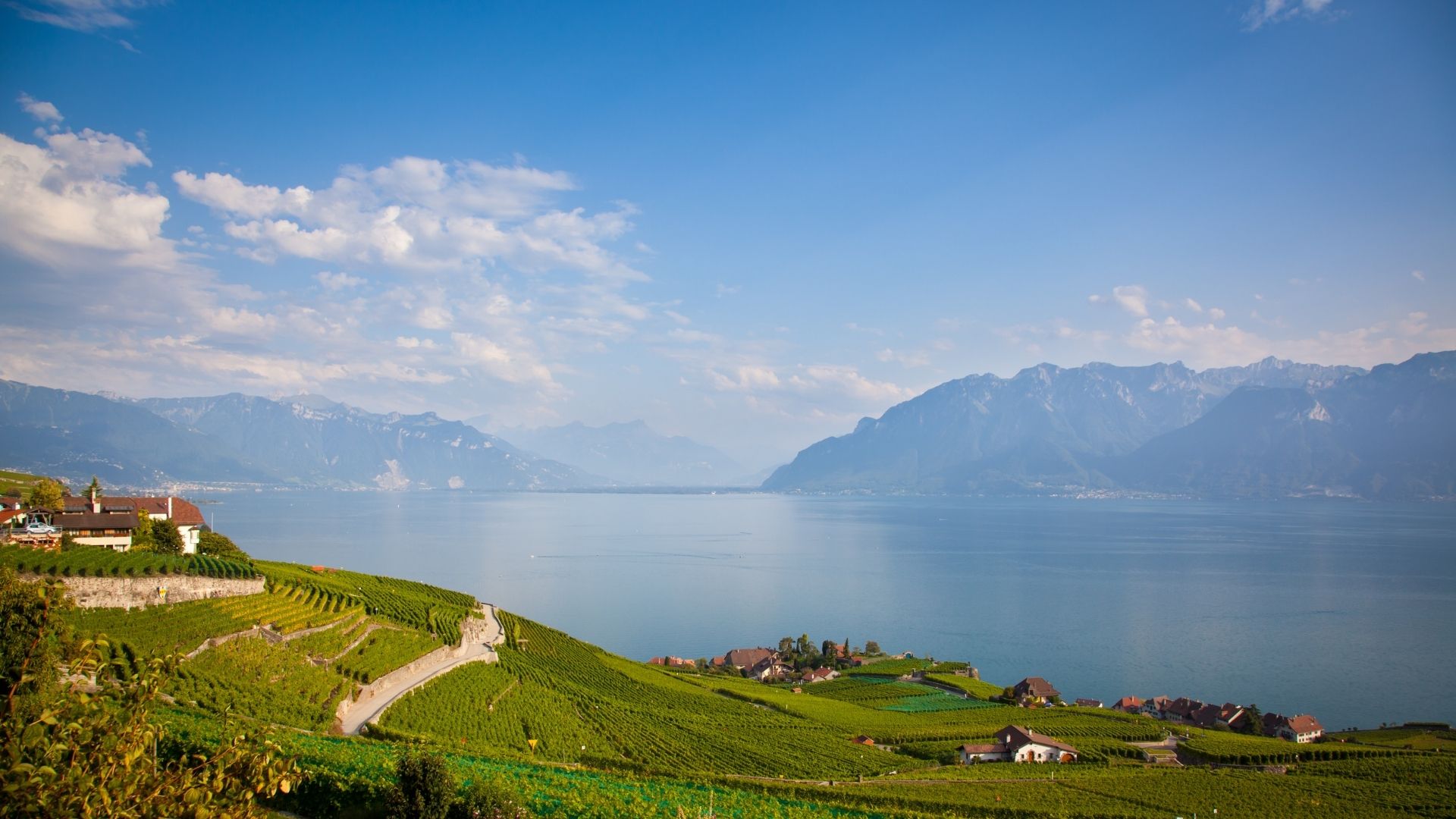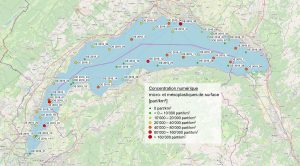Over 55 tons of plastic waste ends up in Lake Leman every year
For many, plastic pollution is often looked at as being just an oceans-based issue. That’s what tends to get covered in the media, so it’s understandable, but as more research continues to reveal, it is as much or more of a problem on land and in our freshwater sources.
Lake Leman is the biggest fresh water surface (582,4km2) in western Europe. Located between Switzerland and France, it contains about 89 billion cubic meters of water coming from the Rhône river and the surrounding mountains. Its drainage basin has a surface of 7975 km2 shared between both countries and inhabited by over 1 million people. The population on the shores of the lake is growing rapidly due the attractiveness of the region and the diversity of its activities.

The stunning beauty of Lake Leman.
In 2018 and 2019, the Swiss organization Oceaneye conducted researches about plastics in the lake and collected 51 samples from all over its surface using a manta net. Then, its members analyzed it to make an estimation of the amount of plastic waste and compare it to the quantities found in the ocean. The results showed that lake Leman is as polluted as most of the oceans on the planet, with the exception of the Mediterranean sea, which is particularly contaminated with microplastics. A study conducted by Julien Boucher concluded in 2019 that around 55 tons of macro and microplastics are spilled into the lake every year.
“This is something we continue to see in freshwater sources all over the globe,” said Tod Hardin, COO of Plastic Oceans International. “Our rivers, lakes, soil and air have all been found to contain micro or nano plastics, which speaks to our ongoing and growing human addiction to the substance.”
Based on Oceaneye’s study, each year, every inhabitant of the lake drainage basin “releases” about 50 grams of plastic into the Leman when the numbers rise to 1563 grams for the oceans. Then how could the lake be as polluted as most seas ? Because of the density of the population on its drainage basin. In relation to the total surface of the oceans, the population density is about 17 people/km2 of water while this number increases to 1700 people/km2 for lake Leman. Therefore, the relative « low impact » each people has on the lake is compensated by their number.

Data showing plastic concentration on the surface of Lake Leman.
The origin of these plastic particles depends of the depth you are looking at. Oceaneye estimates that most of the plastic found at the surface of the lake comes from product packaging, while tyres abrasion can be held accountable for as much as 30 tons of polluting materials in the deep water and the sediments each year Boucher et al. (2019). In both cases, the studies highlight the fact that activities such as construction or leisure have a relatively small impact. The consequences of this pollution are the same as in the ocean: micro and macroorganisms absorb plastic particles and chemicals released by human activities are repelled by water and stick to the plastic that gets ingested by plankton, fish or birds, which potentially disturbs their metabolic activity due to endocrine disruptors. Plastic pieces also deposit into the sediments, where their impact is less documented. Plastic pieces also deposit into the sediments, where their impact is less documented. Even though overpopulation is the main reason for finding important quantities of plastic in the lake, several solutions exist to lower its concentration. First of all, a strict application of selecting waste sorted by the population and a will to reduce single-use plastic would make a huge difference. The utilization of reusable and biodegradable paper bags for groceries is a first step. Consuming local products, often sold directly by the producer without plastic packaging would be step 2 and would benefit both to the environment and to local producers. The authorities could also communicate in the a more efficient way while continuing to develop waste collection systems. In the end, the most effective solution would be to legally limit the amount of plastic available in shops. In the meantime, every small gesture counts. Picking up trashes while hiking or practicing outdoor sports definitely makes a differences and is something we should all do.
Florian Legrand is a photographer, journalist and environmental activist based in France.
Related Posts:
Let’s Not Forget Those Lakes and Rivers
Plastic Oceans International Joins the Great Lakes Coalition
Sources:
Oceaneye – Pascal Hagmann et Gaël Potter : Evaluation de la pollution du Léman par les déchets micro-et mésoplastiques de surface, 18.06.2020
Florian Faure, Colin Demars, Olivier Wieser, Manuel Kunz and Luiz Felippe de Alencastro, Plastic pollution in Swiss surface waters: nature and concentrations, interaction with pollutants, Environ. Chem. CSIRO 2015, doi:10.1071/EN1421
Marc Babut, Jean-Luc Loizeau, Mathieu Coster: Microplastics in lake Geneva: considering knowledge gaps and monitoring, 2019, 257-225
Marie-Elodie Perga, Leslie Lainé: Zooplancton du Léman, 2011 Julien Boucher, Guillaume Billard: The challenges of measuring plastic pollution, 2019

Trackback: suicide bombing
Trackback: Ford Everest
Trackback: ทดลองเล่นสล็อต pg
Trackback: cinemakick
Trackback: cinemakick .com
Trackback: ufa168
Trackback: คลินิกเสริมความงาม
Trackback: ร้านตัดแว่น ใกล้ฉัน
Trackback: recipesjelly
Trackback: สีกันไฟ